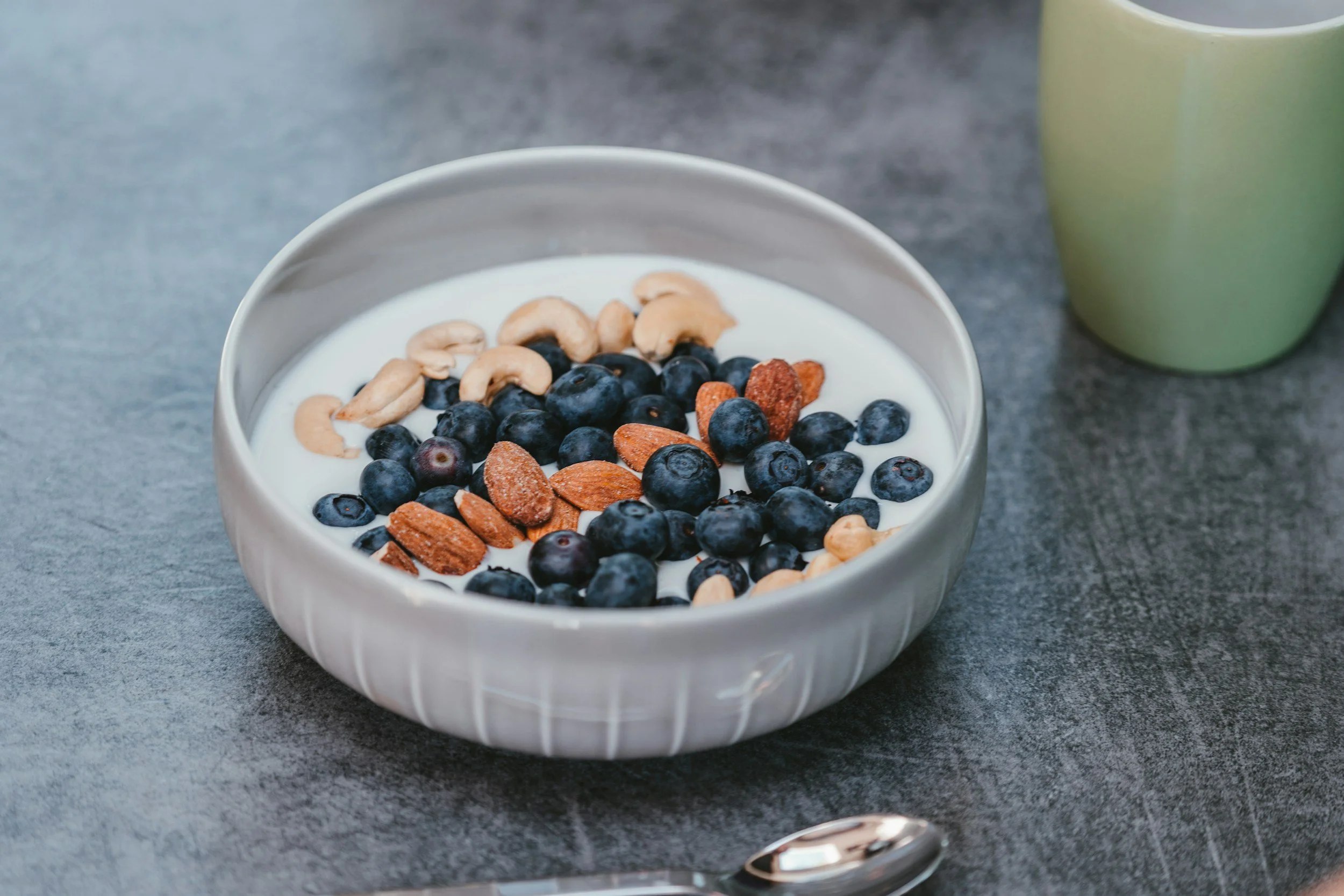Eating for Endometriosis: How Nutrition Can Help Manage Symptoms
Endometriosis is a chronic inflammatory condition affecting approximately one in nine Australian women and those assigned female at birth (AIHW, 2019). It involves the growth of endometrial-like tissue outside the uterus, leading to inflammation, pain, and potential complications with fertility and digestion.
While medical treatments such as surgery and hormone therapy can play an essential role in managing endometriosis, dietary strategies can help reduce inflammation, support oestogen regulation, and improve gut health.
This article explores the key nutritional considerations for endometriosis management.
Understanding endometriosis and its drivers
Endometriosis occurs when tissue similar to the lining of the uterus implants outside the uterus, most commonly on the ovaries, fallopian tubes, and surrounding pelvic structures. Unlike the uterine lining, which sheds during menstruation, these endometriotic lesions have no exit route, resulting in local inflammation, pain, and scarring.
Common symptoms include:
Chronic pelvic pain, often worsening during menstruation
Heavy or irregular periods
Bloating and digestive discomfort (“endo belly”)
Gastrointestinal disturbances (constipation, diarrhoea, nausea)
Fatigue
Pain during or after intercourse
Fertility challenges
While the exact cause remains unknown, research suggests that chronic inflammation, excess oestrogen, and gut health all contribute to symptom severity (Zondervan et al., 2020).
1. Managing inflammation through diet
Chronic inflammation is a key driver of endometriosis progression and symptom severity. Consuming anti-inflammatory foods may help reduce the intensity of pain and support immune function.
Recommended foods
Omega-3 fatty acids: Found in oily fish (salmon, sardines, trout), flaxseeds, and walnuts, omega-3s can help reduce inflammatory prostaglandins that contribute to pain (Missmer et al., 2010).
Fruits and vegetables: A variety of colourful produce, such as berries, leafy greens, capsicum, and sweet potatoes, provides antioxidants that help modulate inflammation.
Spices: Spices contain bioactive compounds that may help lower inflammatory markers (Daily et al., 2016).
Nuts and seeds: Almonds, sunflower seeds, and walnuts provide healthy fats and micronutrients that support the immune response.
Foods to limit
Ultra-processed foods: Packaged snacks, soft drinks, and highly refined carbohydrates are associated with increased inflammatory responses (Fritsche, 2015).
Trans fats: Found in margarine and fast food, trans fats have been linked to a higher risk of endometriosis (Missmer et al., 2010).
Excess red meat: Some studies suggest that processed and red meats may contribute to inflammation (Trabert et al., 2011).
An overall focus on whole, nutrient-dense foods with adequate healthy fats and fibre can support inflammation management.
2. Supporting oestrogen regulation
Oestrogen dominance, where oestrogen levels are high relative to progesterone, is associated with the development and progression of endometriosis. Optimising the body’s ability to metabolise and eliminate excess oestrogen can assist in symptom management.
Nutritional strategies
Increase fibre intake: Fibre binds to excess oestrogen in the gut, facilitating its excretion. Whole grains, legumes, and vegetables are excellent sources (Gaskins et al., 2009).
Include cruciferous vegetables: Broccoli, Brussels sprouts, cabbage, and cauliflower contain indole-3-carbinol (I3C), which supports liver detoxification of oestrogen (Fuhrman et al., 2004).
Reduce alcohol intake: Excess alcohol can impair oestrogen metabolism in the liver, leading to increased circulating oestrogen levels (Rinaldi et al., 2006).
Consume phytoestrogens in moderation: Flaxseeds and soy contain plant-based oestrogens that can support hormonal balance by modulating oestrogen receptor activity (Mouritsen et al., 2017).
Reducing exposure to endocrine-disrupting chemicals found in plastics and certain personal care products may also help reduce the overall oestrogen burden on the body.
3. Prioritising gut health
The gut microbiome plays a central role in hormone metabolism, immune function, and inflammation. Research has highlighted the importance of the estrobolome, a collection of gut bacteria involved in oestrogen metabolism. An imbalance in these microbes may lead to higher circulating oestrogen levels and increased inflammatory responses (Baker et al., 2017).
Gut-supportive strategies
Include fermented foods: Yoghurt (dairy or plant-based), kimchi, sauerkraut, and miso contribute beneficial bacteria to support gut health.
Include prebiotic fibre: Foods such as garlic, onions, asparagus, and oats help nourish beneficial gut bacteria.
Maintain adequate hydration: Drinking enough water supports digestion and regular bowel movements, which are essential for oestrogen clearance.
Work with a dietitian to identify and manage potential food intolerances/ sensitivities ie short term low FODMAP diet
A diet rich in plant-based fibres, fermented foods, and hydration can help maintain gut balance and support overall hormone regulation.
Final Considerations
While dietary strategies cannot cure endometriosis, they can play a key role in reducing inflammation, balancing oestrogen, and supporting gut health. Individual responses to foods may vary, so a personalised approach is often beneficial.
Key Takeaways
Focus on anti-inflammatory foods (omega-3s, colourful vegetables, turmeric)
Support oestrogen metabolism with fibre, cruciferous vegetables, and reduced alcohol intake
Optimise gut health by including fermented foods and prebiotic fibre
Minimise highly processed foods, trans fats, and inflammatory triggers
For tailored guidance, consulting a dietitian who specialises in endometriosis can help develop a personalised nutrition plan suited to individual needs.
References
Australian Institute of Health and Welfare (AIHW). (2019). Endometriosis in Australia.
Baker, J. M., Al-Nakkash, L., & Herbst-Kralovetz, M. M. (2017). Estrogen-gut microbiome axis: Physiological and clinical implications. Maturitas, 103, 45-53.
Daily, J. W., Yang, M., & Park, S. (2016). Efficacy of turmeric and curcumin in pain reduction and functional improvement. Journal of Medicinal Food, 19(3), 277-289.
Gaskins, A. J., et al. (2009). Dietary fiber intake and reproductive function. American Journal of Clinical Nutrition, 90(4), 1061-1069.
Missmer, S. A., et al. (2010). A prospective study of dietary fat consumption and endometriosis risk. Human Reproduction, 25(6), 1528-1535.
Zondervan, K. T., Becker, C. M., & Missmer, S. A. (2020). Endometriosis. Nature Reviews Disease Primers, 6(1), 9.




